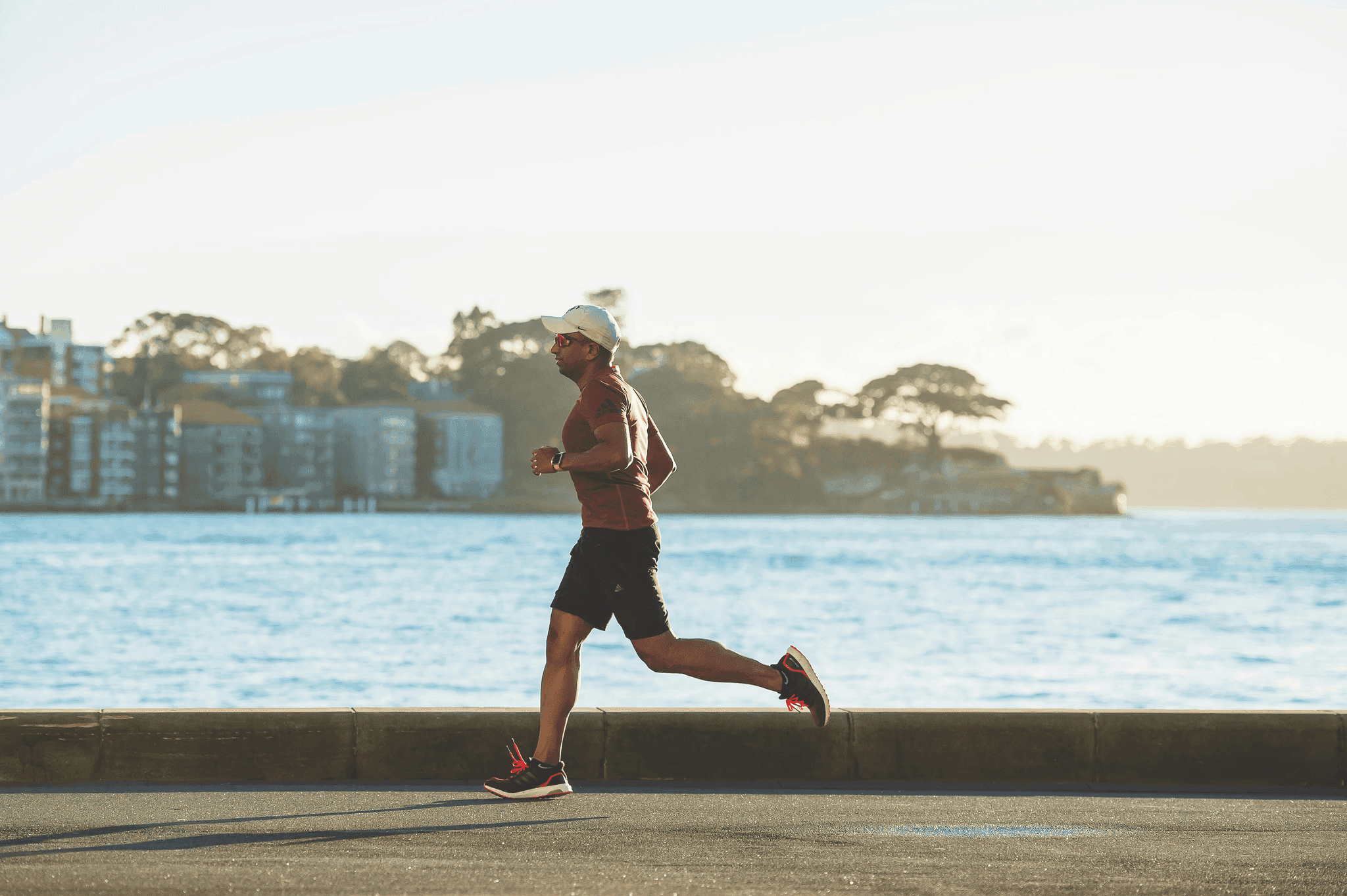Introduction
Fatigue, persistent joint aches, or a general feeling of being “off"—these seemingly unconnected symptoms might all point to a common culprit: vitamin D deficiency. Vitamin D is one of the most common deficiency vitamins worldwide, and maintaining adequate levels is essential for bone and muscle health.
Understanding this crucial nutrient isn’t just about preventing deficiency, it’s about empowering yourself to take control of your wellness journey.
What Is Vitamin D and Why Does Your Body Need It?
Vitamin D isn’t just another vitamin—it’s actually a hormone that your body produces naturally when exposed to sunlight. This remarkable nutrient acts like a master key, unlocking countless processes throughout your body.
Unlike other vitamins that we must obtain entirely from food, vitamin D occupies a unique position in human health. Your skin contains a special compound that transforms into vitamin D when touched by ultraviolet B (UVB) rays from the sun. The skin's ability to synthesise vitamin D can be affected by factors such as age and pigmentation. This evolutionary adaptation highlights just how fundamental this nutrient is to human survival and wellness.
Vitamin D is essential for helping the body absorb calcium and phosphorus from the diet, supporting bone and overall health. It also facilitates phosphorus absorption, which is important for bone strength.
Discover the 5 Habits That Boost Your Longevity
Unlock a doctor-reviewed 5-day guide to the core pillars of long-term health—diet, exercise, lifestyle, sleep, and mental wellbeing. Evidence-based, practical, and designed to help you start making meaningful changes today.
No spam. Unsubscribe anytime.
By continuing, you agree to receive occasional updates from Emerald. See our Privacy Policy.
The Far-Reaching Impact of Vitamin D on Your Health
Bone Health: Your Body's Foundation
When we think of strong bones, calcium often gets all the credit. However, without adequate vitamin D, your body can only absorb about 10-15% of dietary calcium. With sufficient vitamin D, this absorption rate jumps to 30-40%.
A prolonged deficiency can trigger a troubling cascade: your body, desperate to maintain critical calcium levels in your blood, begins breaking down your own bones. This process is regulated by parathyroid hormone, which increases when vitamin D is low to help maintain blood calcium at the expense of bone health. This process can eventually lead to osteoporosis, transforming your strong skeletal framework into something more resembling Swiss cheese—full of holes and prone to fractures.
Immune System: Your Personal Defence Force
Your immune system relies on vitamin D to function. This nutrient helps your body produce antimicrobial proteins that act as natural antibiotics. It also helps regulate immune responses, preventing your defense system from becoming overactive and attacking healthy tissue—a key factor in autoimmune conditions.
Research shows that people with optimal vitamin D levels experience fewer lung infections and recover more quickly when they do get sick. During cold and flu season, maintaining healthy vitamin D levels becomes even more crucial for your body's defense strategy.
Heart Health: Keeping Your Engine Running
Emerging research reveals vitamin D's vital role in cardiovascular wellness. This nutrient helps regulate blood pressure by influencing how your kidneys handle sodium. It also reduces inflammation in blood vessels and helps maintain the flexibility of your arteries.
Studies suggest that people with vitamin D deficiency face a significantly higher risk of heart disease, stroke, and high blood pressure. By maintaining healthy levels, you're essentially providing premium maintenance for your body's most important pump.
Mental Wellness: The Mood Connection
Have you ever noticed feeling more upbeat on sunny days? That's not just psychological—it's biochemical. Vitamin D receptors exist throughout your brain, influencing the production and function of neurotransmitters like serotonin, often called the "happiness hormone."
Seasonal Affective Disorder (SAD) often correlates with the reduced sunlight exposure during winter months, leading to lower vitamin D production. Many people report improvements in mood, energy levels, and overall mental clarity when their vitamin D levels are optimised.

Children's Development: Building Strong Foundations
For growing bodies, vitamin D is absolutely critical. Severe deficiency can lead to rickets, a condition that softens bones and causes painful deformities. But even mild deficiency during childhood can have lasting effects, potentially impacting everything from height to immune function later in life.
Children need vitamin D not just for strong bones, but for proper muscle development, immune system maturation, and even cognitive development. Ensuring adequate levels during these crucial years sets the stage for lifelong health. For infants, if breast milk alone does not provide enough vitamin D, infant formula is often fortified with vitamin D to ensure babies receive sufficient amounts for healthy bone development.
Natural Sources of Vitamin D: Nature's Pharmacy
The Sun: Your Primary Source
Just 10-30 minutes of midday sun exposure several times per week can help many people maintain adequate levels.
However, this process is more complex than it might seem. Factors affecting vitamin D production from sunlight include:
Latitude: People living farther from the equator receive less intense UVB radiation
Season: Winter months provide significantly less UVB, especially in northern climates
Time of day: UVB rays are strongest between 10 AM and 3 PM
Skin pigmentation: Darker skin requires longer sun exposure to produce the same amount of vitamin D
Age: Older adults produce less vitamin D from the same sun exposure and have more difficulty developing vitamin D due to changes in the skin and less exposure to sunlight.
Sunscreen use: While important for skin cancer prevention, SPF 30 blocks about 97% of UVB rays
Dietary Sources: Food as Medicine
While sunlight remains the most efficient source, certain foods can help boost your vitamin D intake:
Fatty Fish (the superstars):
Wild-caught salmon: Up to 1,000 international units (IU) per 3.5-ounce serving
Mackerel: About 550 IU per serving
Sardines: Around 270 IU per serving
Rainbow trout: Approximately 650 IU per serving
Other Sources:
Cod liver oil: A traditional and potent source, providing high vitamin D content (about 1,360 IU per tablespoon), but should be avoided during pregnancy.
Egg yolks: About 40 IU per yolk (from pasture-raised hens)
Mushrooms exposed to UV light: Variable amounts
Fortified foods: Fortified cow's milk (a primary source in many diets, especially in the U.S. due to mandatory vitamin D3 fortification), orange juice, cereals, and plant-based milk alternatives
Individuals following a vegan diet are at higher risk of vitamin D deficiency, as they avoid animal-derived sources like fish, eggs, and cod liver oil.
When choosing foods, check nutrition labels for vitamin D content to help ensure you meet your needs.
The challenge? Even with a diet rich in these foods, most people struggle to meet their daily vitamin D needs through food alone.
Longevity starts with awareness
Less than £1/day. Test 115+ biomarkers. Personalised plan and 1:1 GP support.
Modern Life: The Vitamin D Antagonist
The Indoor Revolution
The average office worker spends 90% of their time indoors. We've essentially created environments that block our primary source of vitamin D.
Consider a typical day: You wake up before sunrise, commute in a car or train, work in an office with artificial lighting, and return home after sunset. Weekends might offer some outdoor time, but often it's insufficient to compensate for five days of indoor living.
Sun Exposure
We've become incredibly conscious about protecting our skin from harmful UV rays—and rightfully so. Skin cancer is a serious concern. However, this necessary protection creates an unintended consequence: dramatically reduced vitamin D production.
The solution isn't to abandon sun protection, but to find a balanced approach. Consider strategic sun exposure: allowing 10-15 minutes of unprotected sun on arms and legs before applying sunscreen, or taking vitamin D supplements to compensate for what you're not producing naturally.
Urban Living Challenges
City dwellers face unique obstacles:
Tall buildings create shadows and block direct sunlight
Air pollution filters UVB rays
Limited green spaces reduce opportunities for outdoor activities
Fast-paced lifestyles prioritise productivity over outdoor time

Weight and Vitamin D: A Complex Relationship
Research from Seattle revealed a fascinating insight: sedentary women with obesity who lost at least 15% of their body weight experienced significant increases in circulating vitamin D levels, regardless of dietary changes. This suggests that weight loss literally “releases” stored vitamin D back into circulation.
This relationship works both ways—vitamin D deficiency may also contribute to weight gain by affecting hormone regulation and metabolic processes. It’s a cycle that understanding can help you break.
Vitamin D Supplements: Your Insurance Policy
Who Needs Extra Support?
While our bodies are designed to produce vitamin D naturally, certain groups face higher risks of deficiency:
Adults over 65: Aging skin produces less vitamin D
People with limited sun exposure: Shift workers, those who cover up for religious or cultural reasons
Individuals with darker skin: Higher melanin content requires longer sun exposure
Those with certain medical conditions: Kidney disease, digestive disorders affecting fat absorption
Exclusively breastfed infants: Breast milk alone doesn't provide adequate vitamin D
Choosing the Right Dietary Supplements
Not all vitamin D supplements are created equal. Here’s what you need to know:
Vitamin D3 (cholecalciferol) is generally preferred over D2, as it’s more effective at raising blood levels
Typical maintenance dose: 400-800 IU daily for most adults
Winter supplementation: October through March in northern climates
Higher doses may be needed to correct deficiency (consult your healthcare provider)
4,000 IU per day is considered the safe upper limit for most adults; exceeding this amount without medical supervision may be unsafe.
Taking very high doses of vitamin D can lead to toxicity, such as high calcium or kidney stones, and should only be done under medical supervision.
Evidence from randomised clinical trials has shown mixed results regarding the benefits of vitamin D supplementation for outcomes like fracture prevention and cancer.
Recognising Vitamin D Deficiency: Your Body's Warning Signs
Vitamin D deficiency often masquerades as other conditions, making it easy to overlook. Your body might be sending subtle signals:
Fatigue and tiredness
Bone pain
Muscle weakness
Muscle aches
Frequent infections
Slow wound healing
Physical Symptoms:
Persistent fatigue that doesn't improve with rest
Bone pain or achiness, especially in the lower back
Muscle weakness or cramps
Frequent infections or slow wound healing
Emotional Symptoms:
Mood changes or increased irritability
Feelings of sadness or depression
Difficulty concentrating or "brain fog"
Anxiety that seems disproportionate to circumstances
These symptoms can creep up gradually, like a dimmer switch slowly reducing the lights. Many people adapt to feeling suboptimal without realising a simple nutrient deficiency might be the cause.
Testing and Monitoring: Knowledge Is Power
If you're experiencing symptoms or belong to a high-risk group, don't play the guessing game with your health. A simple blood test measuring vitamin D levels can provide clear answers.
Your healthcare provider can help interpret these results in the context of your overall health picture. Some individuals may benefit from higher levels, while others need to be cautious about over-supplementation.
Taking Action: Your Vitamin D Journey
Understanding vitamin D is just the beginning. True wellness comes from translating knowledge into action. Start by assessing your risk factors and current symptoms. Consider getting tested to establish your baseline. Then, create a personalised plan that fits your lifestyle—whether that's strategic sun exposure, dietary changes, supplementation, or likely a combination of all three.
Remember, optimising your vitamin D levels isn't about perfection—it's about progress. Small, consistent changes can lead to significant improvements in how you feel and function. Your body has a remarkable capacity for healing and vitality when given the right resources.
Your wellness journey is uniquely yours, but you don't have to navigate it alone. Healthcare providers, nutritionists, and preventive health specialists can provide guidance tailored to your individual needs. The key is taking that first step toward understanding and optimising your vitamin D status.

References
Test 115+ biomarkers for fine-tuning your health
See your results in 3 days with high-level accuracy and a certified GP-reviewed action plan





